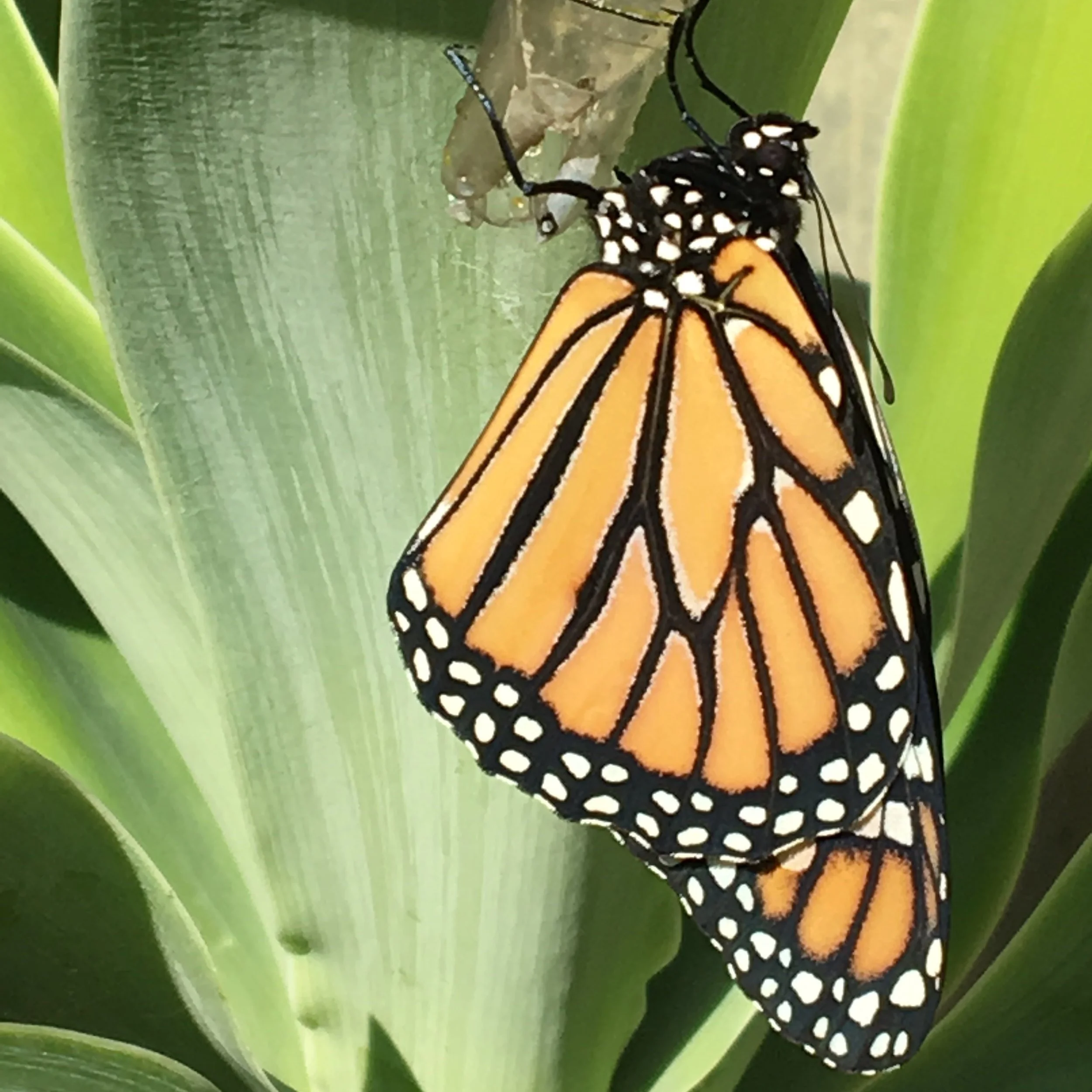Butterfly Gardens, Include Caterpillars
Butterfly Gardens - INCLUDE Caterpillars
Butterfly Gardens – Who doesn’t dream of a beautiful garden filled with flowers and butterflies fluttering around? A butterfly garden is a sanctuary for butterflies to feed and thrive. However, it is easy to forget that butterflies come with the dreaded caterpillars and caterpillars eat foliage. A butterfly garden should accommodate a variety of butterfly species at each stage of their life cycles: egg, larva, pupa and adult. To attract and keep butterflies, you should have both nectar producing plants as well as plants for caterpillars, also known as host plants. In general, native plants are highly encouraged.
Nectar Plants provide food and energy to adult butterflies. Introduce nectar plants that bloom throughout the growing season. Flowers with multiple florets and in bright colors of pink, red, orange, white, yellow and purple are most attractive to butterflies. Examples of butterfly-friendly flowering plants include Asters, Lantana, Thunbergias (black-eyed Susan), Tagetes (marigold), Salvias, Echinacea (purple coneflower), Zinnias, Buddleia (butterfly bush), Asclepias (milkweed), Sunflowers, Achillea (yarrow) and Chrysanthemums.
Host Plants provide a place for butterflies to lay eggs. The foliage of specific plants, including trees, shrubs, herbs, vines, and common weeds serves as food sources for caterpillars once the larvae hatch. The plants also provide a support structure for butterfly chrysalises and shelter and protection from predators. Many caterpillars only feed on one specific plant and different plants attract different butterfly species. Most female butterflies lay their eggs on or near that plant. If you don’t have that specific plant, you are likely not to see that butterfly. For example, monarch butterflies are primarily attracted to milkweeds, and swallowtail butterflies are drawn to verbena and lantanas. Please be aware that these host plants may devoured by the caterpillars in a successful butterfly garden.
Water Source: A puddling station is recommended to help butterflies stay hydrated and receive vitamins, minerals and other nutrients from muddy water. Fill a shallow dish or depression with water, adding soil, sand, or pebbles to create a watery mud. Adult butterflies drink through a long tubular tongue that uncoils to sip liquid. In addition to flower nectar, they also consume tree sap, pollen, fallen fruit, and animal dung.
Basking Area: This can be a large rock or collection of rocks where butterflies warm themselves and rest.
Avoid Toxic Pesticides: Many pesticides kill butterflies, butterfly larvae (caterpillars), and other essential pollinators, even organic ones. To discourage pests from your garden consider companion plantings, planting flowers that repel pests and follow the practice of reduced fertilizer usage. Avoiding the use of pesticide encourages an increase of natural enemies and beneficial insects, such as spiders, lacewings, ladybugs, praying mantis, parasitic wasps and ground beetles to help control unwanted pests.
Consider the above when you see holes in the foliage of your garden. If you’re killing a caterpillar, you’re killing a butterfly.
Common California Butterflies, Moths And their host plants
Monarch (Danaus plexippus) - read more here
Asclepias fascicularis
Asclepias speciosa
Asclepias tuberosa
Swallowtail (Battus philenor)
Aristolochia californica
Anise Swallowtail (Papilio zelicaon)
Foeniculum vulgare (fennel)
Pale Swallowtail (Papilio eurymedon)
Rhamnus spp.
Prunus ilicifolia
Painted Lady (Vanessa cardui)
Artemesia californica
California Tortoiseshell (Nymphalis californica)
Ceanothus
Arctostaphylos
Mormon Metalmark (Apodemia mormo)
Eriogonum latifolium
Silvery Blue Butterfly (Glaucopsyche lygdamus)
Lupinus arboreous
Orange Sulfur Moth (Colias eurytheme)
Lupinus albifrons
Variable Checkerspot (Euphydryas chalcedona)
Mimulus aurantiacus











